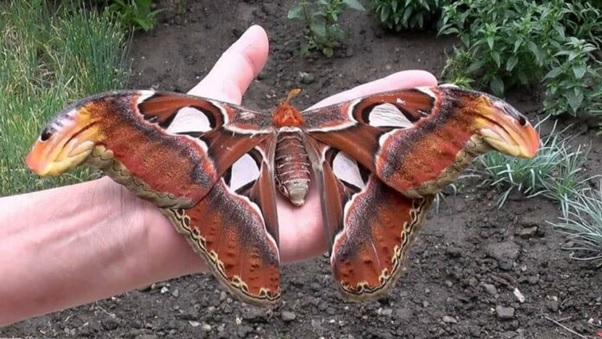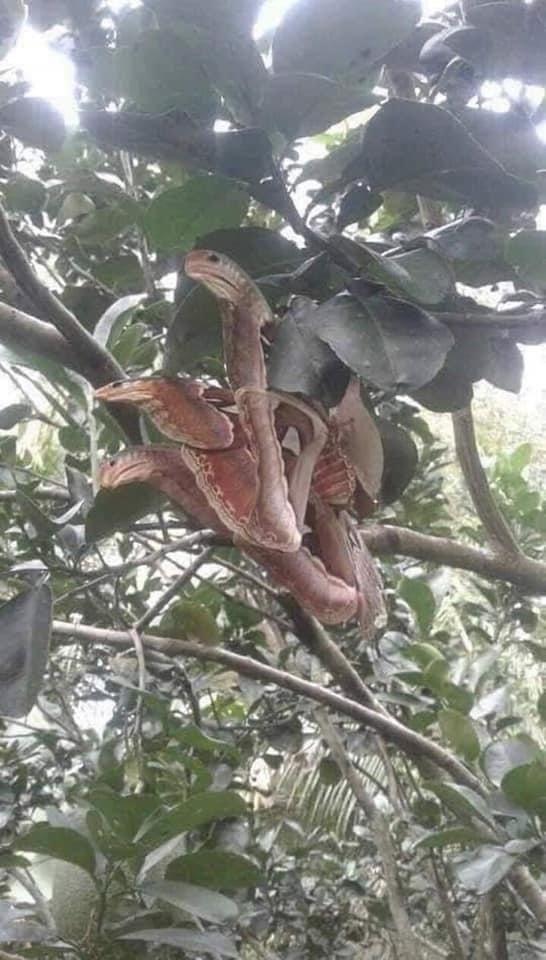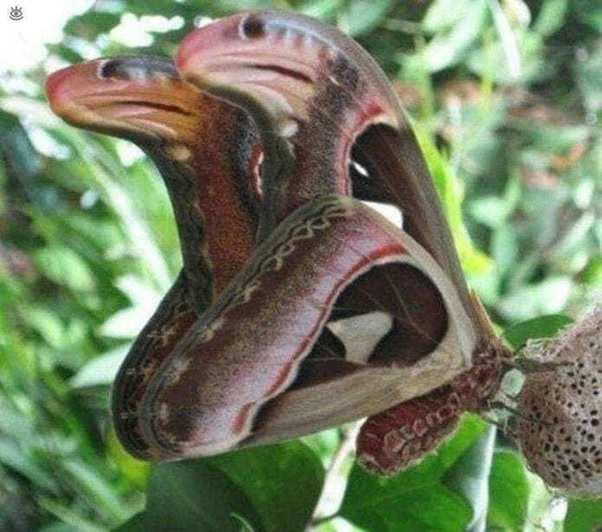The Atlas moth is far from ordinary. Its uniqueness lies not only in its 9.4-inch wingspan but also in its remarkable ability to mimic one of the most formidable predators: snakes.
These moths, native to the forests of Asia, were first described by Carl Linnaeus in the 10th edition of Systema Naturae in 1758. Their distinct wing patterns make them stand out. The upper side of their wings is reddish-brown, adorned with patches of black, white, pink, and purple lines, while the tips of both forewings feature prominent extensions that resemble a snake’s head.
“It is impossible not to be fascinated by the Atlas moth. This is due to its beauty, the detail on its wings, and its sheer size at every stage of its life cycle,” says Luke Brown, manager of the Museum’s butterfly house. The more we learn about this unique species, the more we agree with his statement.

Even as a caterpillar, the Atlas moth is quite impressive. The larvae feed voraciously, storing up energy for the pupal and adult stages. They also produce silk similar to that created by domesticated silkworms.

The Atlas moth caterpillar is a voracious eater. Initially, they consume their eggshells and then feed on their favorite leaves from citrus, guava, cinnamon, and Jamaican cherry trees.
Many of these moths are kept in captivity, such as in butterfly conservatories, where they have designated feeding areas. “We don’t let them roam free in the exhibition because they eat so much. This allows them to build up fat reserves for the adult to live off. If we didn’t monitor their eating, we would have no plants left in the butterfly house, so we keep them in their own feeding area while they are growing,” Brown explained, according to the Natural History Museum.
By resembling a snake, the Atlas moth is feared by other animals and insects. This disguise helps prevent them from being attacked and eaten. While predators eventually realize the moth isn’t actually a snake, it gives the moth a chance to escape.
The distinctive pattern of the Atlas moth is a result of evolution and natural selection. Over time, moths with snake-like patterns had a better chance of survival, passing those genes to subsequent generations.
Not only predators but also humans can be easily deceived by the moth’s appearance.
Habitat loss and deforestation threaten these insects, but conservation efforts are crucial for their survival and unique adaptation.

What do you think of these moths? Aren’t they stunning?
Please SHARE this article with your family and friends on Facebook.